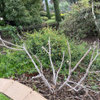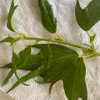Planting higher in clay soil
jenn
12 years ago
Related Stories

GARDENING GUIDESGardening Solutions for Heavy Clay Soils
What’s a gardener to do with soil that’s easily compacted and has poor drainage? Find out here
Full Story
GARDENING GUIDESHow to Stop Worrying and Start Loving Clay Soil
Clay has many more benefits than you might imagine
Full Story
GARDENING GUIDESHave Acidic Soil in Your Yard? Learn to Love Gardening Anyway
Look to acid-loving plants, like conifers and rhododendrons, to help your low-pH garden thrive
Full Story
GARDENING GUIDESGet the Dirt on Your Garden’s Soil
Understand how your soil supports your plants so you can ensure your garden’s success
Full Story
LANDSCAPE DESIGNHow to Shape a Rain Garden and Create the Right Soil for It
Learn how to grade, lay out and amend the soil in your rain garden to support your plants
Full Story
GARDENING GUIDESThe Poop Scoop: Enrich Your Soil With Good Old Manure
Get over the ick factor already — this natural super-ingredient for soil has so many benefits, you'll wonder why you ever went chemical
Full Story
GARDENING GUIDESGardening Solutions for Dry, Sandy Soils
Has your desert or beachy site withered your gardening creativity? Try these ideas for a beautiful, easy-care landscape
Full Story
GARDENING GUIDESInvite Cellophane Bees to Your Garden by Providing Patches of Bare Soil
Look for cellophane bees (Colletes) pollinating flowering trees and shrubs in U.S. gardens this spring
Full Story
GARDENING GUIDES9 Clay-Busting Native Flowers for Summer Sun
These plants survive and even thrive in tough clay soil east of the Rocky Mountains
Full Story
FARM YOUR YARDHow to Get Good Soil for Your Edible Garden
The nutrients in your soil feed the plants that feed you. Here are tips on getting it right — just in time for planting season
Full Story







gobluedjm 9/18 CA
Dan _Staley (5b Sunset 2B AHS 7)
Related Professionals
Forest Park Landscape Architects & Landscape Designers · Oconomowoc Landscape Architects & Landscape Designers · Owings Mills Landscape Architects & Landscape Designers · Gainesville Landscape Contractors · Deerfield Landscape Contractors · Fort Worth Landscape Contractors · Gurnee Landscape Contractors · Milford Mill Landscape Contractors · Norristown Landscape Contractors · Plantation Landscape Contractors · River Ridge Landscape Contractors · Thonotosassa Landscape Contractors · Wheat Ridge Landscape Contractors · Lake Forest Swimming Pool Builders · Arlington Window Contractorsbahia
calistoga_al ca 15 usda 9
dicot
jennOriginal Author
calistoga_al ca 15 usda 9
jennOriginal Author